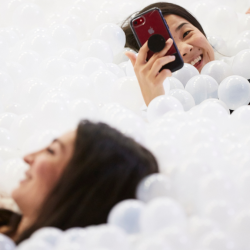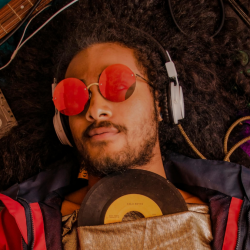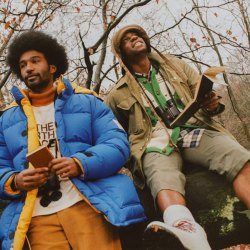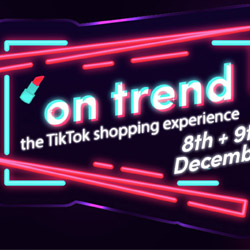Brand collaborations aren’t anything new, and — from the Nike Air Force 1 x Tiffany & Co. trainers, to the countless partnerships Mattel and Warner Bros. inked via their Barbie movie — last year showed us that they can produce powerful virality, as well as mixed opinions. In many ways 2023 was the year of the collaboration. Can it be topped? In short, no. However, with consumer expectations higher than ever, experiences are key right now.
Tapping into the experience element
Eventbrite’s TRNDS 2024 report reveals that 62% of attendees would rather spend their money on experiences versus material things. While they’re often seen to account for a larger chunk of brand budgets when compared to other channels, this shows us that despite the rising cost of living, physical events and activations are what consumers seek. As such, they’re a valuable investment. If we stop and think of our fondest memories, chances are they’ll be tied to some sort of event, as opposed to purchasing or wearing a limited edition item. One of the most powerful ways for brands to remain relevant is to tap into this experience mindset, and explore ways to forge collaborations that extend beyond a screen, billboard, or one-off product.
Creativity reigns supreme
As with all campaigns, cutting through the noise requires a unique creative idea. We need to think outside the box and meet consumers in unexpected places, and at less conventional times (for the brands in focus, at least). Some of the ways this can be achieved include:
1 Linking up with brands that play in different spaces
This can not only surprise and delight, but open an organisation up to a new audience. The recent Gymbox x Morley’s Chicken Shop Challenge is a prime example. While these brands might be perceived to have a vastly different customer base, they identified a commonality and tapped into it.
2 Activating around key annual events
The Super Bowl for example, is approaching, and we’re already seeing collaborations emerge. However, consider lesser known or celebrated dates: the market is less crowded, meaning there’s more airtime for the brands’ collaborative experience.
3 Look to technology
Technology is evolving at speed, making it always topical. And artificial intelligence (AI), of course, reigns supreme as a conversation starter right now. Look to it to craft awe-inspiring moments, as it has the ability to raise brand awareness and enhance relevancy. Take Samsung’s Galaxy S24 series launch last month, where they orchestrated a drone display above Canary Wharf and partnered with the London Underground to rename the Circle line the ‘Circle for Search’ line for two weeks. The latter helped to ensure the display wasn’t a one-off moment, and the collaboration enabled Samsung to continue the conversation in ways you wouldn’t typically expect.
4 Collaborate in the same sector
Consider ways to collaborate in the same sector — with competitors, even — to raise awareness of an important cause. The Red Alert and #WeMakeEvents campaign, for example, saw industry bodies and individuals from sectors including events, music and theatre come together to light key landmarks red in 2020; in a bid to raise awareness of the jobs at stake as a result of the pandemic. With sustainability and CSR at the forefront, consumers expect brands to step up. Collaborating in this manner is an effective way to gain trust and generate advocacy in the long run.
Behind-the-scenes partnerships remain a must
Whilst I believe that experiences should be a central component of today’s collaborations, success is the sum of many parts. Ultimately we need to raise awareness of the experience before the fact, to generate buzz and encourage people to get in on the action. As well as keep the conversation going once it ends; so that both brands maintain their relevance. I see immense value in partnering with like-minded agencies, whether it’s social, media buying, PR, advertising, or a combination of these: unearthing the audience insights, and then aligning on the campaign’s creative and vision as a collective is key.
I anticipate we’ll continue to see countless collaborations this year. The ones I’ll be looking out for, though? They’ll tap into consumers’ penchant for experiences, shift away from an ‘it’s been done before’ mentality and embrace the unexpected.
Featured image: Gymbox































